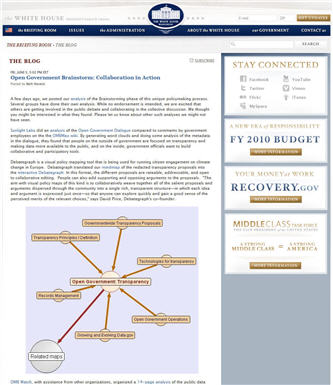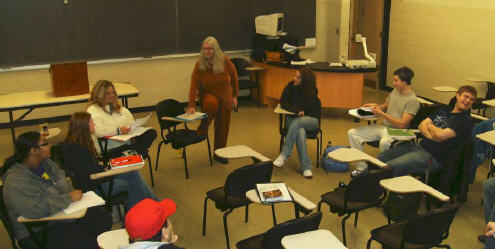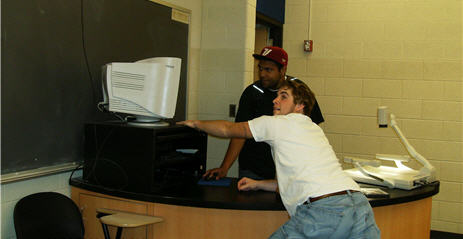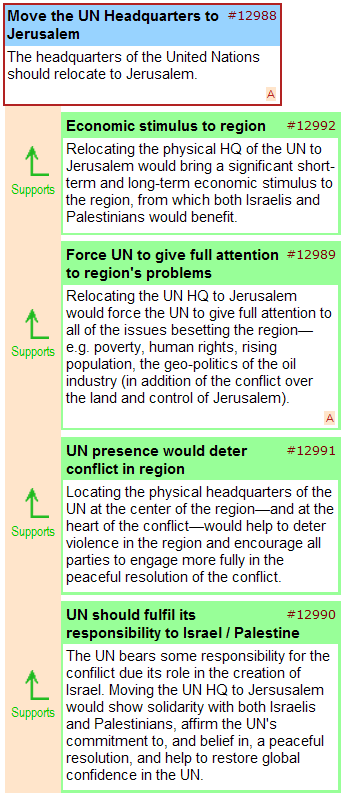Category: Critical Thinking
Mapping the Political Contours of Cyberspace
William Gibson coined the term “cyberspace”, for his 1982 short story Burning Chrome to create a “a narrative engine, and a territory in which the narrative could take place”. Twenty years on, cyberspace is the world’s narrative engine: and an uncharted territory to which the world is still coming to terms.
Political, industrial, and civic leaders are gathering at the Foreign Office’s London Conference on Cyberspace next week to think through the implications, opportunities and contradictions of this emerging world.
The conference will explore key themes – prosperity; social good; freedom of access and expression; cyber crime and international security – with the aim of deepening mutual understanding and beginning to outline a political, social and economic strategy to secure the benefits of cyberspace while addressing the concomitant threats to personal and national security.
The Foreign Office would like the dialogue at the event and online to be as broad as possible – and, in support of this process, Debategraph will be mapping and curating the dialogue as it unfolds live and online.
To start exploring the map – which we have seeded with the initial framework of the conference – click on the small bubbles to move deeper into the debate and on the larger bubbles to move back up.
You can gain an insight into the range and scope of the debate by watching the map evolve here, but you are welcome to add your voice to the debate online by adding new ideas and comments to the map and by rating the ideas, or by suggesting new ideas and questions via Twitter using the #LondonCyber hashtag and/or the Foreign Secretary’s Facebook channel (both of which we will be monitoring as well).
As discussed before, the whole structure of the map is like a wiki – every aspect is provisional, and open to further refinement – and everyone can add new issues, positions, arguments and evidence to the map.
The aim is to weave together all of the arguments into a rich, transparent, non-linear structure that anyone can explore and understand quickly.
As with the other maps in the The Independent series you can keep up to date with developments via @TheIndyDebate on Twitter, and you are welcome to embed the map (like a YouTube video) on your own site or blog using the code shown below:
*Cross-posted at: The Independent
Debategraph honored as one of the AASL’s Best Websites for Teaching and Learning
Peter and I were delighted to discover last week that Debategraph has been named as one of the American Association of School Librarians (AASL) Best Websites for Teaching and Learning 2010.
The award honors the top twenty-five Internet sites for enhancing learning and curriculum development and for fostering the qualities of innovation, creativity, active participation and collaboration, with the chosen sites identified as the “best of the best” by the AASL.
It’s a particular joy for us to see Debategraph recognized in the company of sites that we love using ourselves, such as TED, Creative Commons, Prezi and Evernote, and to discover marvellous new sites among the awardees that are fast becoming favorites too.
The full list of awardees is available here, along with the individual citations accompanying the award for each site.
…and, finally, a big thank you to the AASL’s Best List task force, to everyone who nominated us and, most importantly, to the Debategraph community for all your support and inspiration.
Cross-posted at: Open to Persuasion
CNN, Amanpour and Debategraph
As you may have spotted already, the collaboration between Amanpour and Debategraph launched on CNN last night, with Christiane’s new live global program featuring interviews with the Secretary General of Nato and the Prime Minister of Spain.
If you missed lat night’s episode, it’s available via Podcast here.
Debategraph’s working with Amanpour’s production team and viewers to create debate maps around the interviews and global issues addressed in the programs – and to provide a forum for non-linear, interactive and cumulative debate to complement the program’s thought-provoking analysis and interviews with the global leaders confronting those issues.
Christiane’s aims for the program “to offer multiple perspectives… and serve as the hub for a global community of inquiring minds, hungry for a more daring perspective and a strong, clear, thoughtful take on international stories” emphasize the resonance between our mutual approaches and the reason why Peter and I are delighted to be collaborating with Amanpour’s New York based production team.

“I want this show to stir the global conscience. I have witnessed so much that it’s time to start making real sense of it all”
The program airs on Monday to Thursday at 2100 CET, with a round-up of the best of the week on Fridays on CNN International and Sundays on CNN in the United States – and tonight’s show features interviews with Tony Blair, Terje Roed-Larsen (UN Middle East Envoy), Dan Meridor (Israeli Intelligence Minister), and Saeb Erakat (Chief Palestinian Negotiator).
In conjunction with the launch of program, Peter and I have released a new interface for Debategraph (which will also feature in the forthcoming WAVE climate change project for the European Commission). More on both later — but for now here’s a quick video introduction to the new Debategraph Stream interface:
Collaborative Democracy in the White House
If you have been following the White House’s groundbreaking Open Government Initiative over the past few weeks, you’ll be aware already that Debategraph has been mapping the proposals emerging from the Open Government Brainstorming sessions on Participation, Transparency and Collaboration.

The Open Government Initiative moved into the third, and most significant, Drafting phase today—and we’re delighted to note that the White House’s Open Government team has entrusted this vital phase to our favourite wiki team at MixedInk (who, if you haven’t discovered them yet, offer a truly innovative and powerful approach to the task of collaborative writing, which is ready to be applied in multiple contexts).
The initial Open Government Brainstorming and Discussion phases have been stimulating and generative, but the real collaborative work, the real collaborative responsibility, and the real collaborative opportunity lie in the next phase of synthesis.
So get writing!
…and, to help you on your way, here’s the combined Debategraph of the redacted proposals from the three brainstorming sessions:
Integrating Debategraph with SharePoint
When you are developing a web application one of the most delightful compliments anyone can pay you is to start building on your work. And when the person building is an expert in multiple fields including your own, your joy is complete.
So a huge thank you today to Paul Culmsee and his colleagues at Seven Sigma Business Solutions for building and releasing the free Seven Sigma Debategraph WebPart for SharePoint – which lets you embed live debate maps into SharePoint sites and tune the display to fit enterprise SharePoint portals.

Paul, who has written a brilliant series of posts on the value of issue mapping to SharePoint projects, explains the underlying motivation for the web part:
“SharePoint is a terrific product for aggregating disparate information into a single integrated view. However it is oriented around linear, “list based” information, such as calendars, tasks, documents and the like. Argument visualisation tools like Debategraph do an excellent job of exposing the deep structure of complex problems or issues in a manner that makes argumentation and decision rationale accessible.
The Seven Sigma Debategraph web part for SharePoint provides a means to surface Debategraph argumentation maps within SharePoint. Through the release of this web part, Seven Sigma hopes to increase use of argumentation mapping techniques as a means to facilitate cohesive and productive discussions on complex issues.”
To illustrate the potential, and working with fellow SharePoint gurus Andrew Jolly and Ruven Gotz, Paul has created the Debategraph below on SharePoint Governance – which is also the default starting map when you install the web part:
If you are SharePoint user and would like to experiment with the web part, you can download it here – where Paul also provides short video guides on installing and using the web part.
…and if you would like to learn more about the background to the web part and our collaboration with Seven Sigma, read Paul’s characteristically insightful and engaging blog post here.
Debategraph in the Classroom
When Peter and I first set out to create Debategraph, one of our fondest hopes was that the tool might help to enrich the collaborative and visual learning experience for students in schools and universities.
So it has been a joy for us this semester to be experimenting with Debategraph in classroom with Dr Sharon Chanley and her politics students at Western Illinois University—and we are tremendously grateful to Sharon and the students for having the curiosity and courage to innovate in this way.

Dr Sharon Chanley and the students of POLS 275
Sharon’s class is exploring issues of poverty and wealth inequality in the U.S. and the historical and existing public policy responses to these, and Sharon explained to us what initially captured her imagination about Debategraph:
When I first came upon the DebateGraph in my search for policy-mapping examples, I felt as if someone had designed it specifically for my approach to teaching — almost as if they had observed my discussion-based classes and then depicted them graphically. In teaching policy issues and the political processes involved, I want students to understand their complexity and the interrelatedness of the issues. DebateGraph allows me to do that in a way that two-dimensional images and discussion alone can’t. Students develop their ability to research their positions, find answers to the compelling questions, and enhance their critical thinking skills while providing me a way to comment on and complete individual assessment of their work — all important to their learning in and beyond the classroom. And, they can do it in a format that fits into their familiarity with the computer, the Internet, and their preference for the visual and importantly in a way that connects them with the rest of the world.”
During the first phase of the course Sharon and the WIU students—Brandon, Colisha, Derek, James, Jan, Jared, John, Julio, Kimberly, Patrick, Robert, and Ruth—are using Debategraph to build an informal collaborative overview of the policy domain. You can see their work in progress below—and in the next phase of the course the emphasis will shift more to deepening the map and developing a more formal structure for the material.
We have been delighted with the enthusiastic feedback from the students so far, who have taken to this new approach to learning in fine style:
I like the DebateGraph as a learning tool because it teaches us how to do in-depth research. It also allows us to open up class discussions, which allows us to hear other people’s points of view.
The DebateGraph is an excellent learning tool which helps students learn through critical thinking. I really enjoy the exercise.

I think the DebateGraph is an outstanding learning tool. It forces the student to look in-depth at a particular subject. It makes people come up with questions to see if the particular problem can be resolved.
In general, I like the graphics display as a study tool. The generation tends to like information that is bite-sized, easily accessible, and fast paced, so the point and click nature makes it very easy to find information and explore related topics which may have been otherwise overlooked.
DebateGraph is not only a great tool, but it has allowed me to gain new knowledge. It is also a great tool for students to learn about policy issues, and it is also a great tool to use.
The DebateGraph is a really cool way to debate topics so that there is a structure and much more information can be transferred.
The students’ feedback is all more gratifying given that 40% of their overall course grade is being assessed on their individual and collaborative contributions to the map. And Sharon has been employing the RSS feed, email alerts, and edit history to support her grading process—and the map Message Board to ask, and answer, student questions outside class hours.
From our perspective it has been a wonderful start, and an experience from which Peter and I are learning much too about the ways in which Debategraph can be used in the classroom; a learning experience for which we would like to give Sharon and her pioneering students a wholehearted Anglo-Australian vote of thanks.
Visualizing Middle East Peace
The events in Israel and Gaza this year have prompted gloomy prognoses for the prospects for peace; a mood deepened by the mixed signals from the Israeli election and the latest developments with Iran.
Lord Patten, writing for European Voice last month, struck a particularly bleak note:
"However tough things looked in the past, I have never felt such a sense of despair about Palestine and Israel. Reason has been drowned in blood. It seems as though the politics of hope have given way to the politics of the cemetery. Poor Palestine. Poor Israel."
Independent readers and the Debategraph community have started to explore the options for peace in the Middle East over the last few weeks, and, though the map is still at an early stage of development, it already provides a succinct insight into the nature and scale of the challenge; showing how strong views at either end of the spectrum pull the peace proposals towards the gyre of despair.
One of the advantages of visual mapping in this context, though, at least at the outset, is that it’s not asking anyone to take sides: just asking everyone to pool their understanding to map the contours of the problem.
The visual mapping process also opens up the possibility of creative brainstorming and lateral suggestions, such as the proposal to relocate the UN headquarters to Jerusalem, illustrated below – and we would like to see more contributions of this kind as the map develops over the coming weeks.

Given the progress made with the map so far, and the work still ahead, we’re extending the first mapping phase through the spring, and, will be including other partners in the process as we seek to engage the main actors in the region.
Anyone who would like to join us in this process is welcome to do so, and, if you would like to involve your own blog or website readers in the debate, you can embed the map—like a YouTube video—using the embed code shown below:
<iframe src=’http://debategraph.org/flash/fv_indep.aspx?r=11474&d=2&i=1′ frameborder=’0′ width=’490′ height=’650′ scrolling=’no’></iframe>
In the meantime, I will be examining different areas of the map in detail on the blog over the coming weeks and will present the mapping community’s work-in-progress to a conflict resolution forum in Haifa later this year.
Cross Posted at: Independent Minds
Mapping the IQ2 Green Festival on Climate Change
This Sunday I’ll be live mapping the debates at the marvellous IQ2 Green Festival on Climate Change at the Royal Geographical Society in London.

The festival, for which tickets are still available, has assembled a fascinating group of climate change speakers, including: Professor Mohan Munasinghe, Sir David King, Stanley Johnson, Professor Chris Rapley, Joan Ruddock, The Viscount Monckton of Brenchley, Mark Woodall, Tony Juniper, Fiona Harvey, David Bellamy, Malini Mehra, Christine Loh, Isabel Hilton, Jonathon Counsell, Steve Koonin, Jeremy Leggett, Tom Burke, Ed Crooks, Michael Keating, and Oliver Tickell.
The full schedule encompasses a mixture of debates, seminars, and panel discussions, including: Climate change is the greatest threat to humanity, Countdown to Armageddon – how long have we got?, Can Asia go green? Can technological innovation save us from disaster?, Green Herrings – what we need and needn’t bother doing, Biofuels – essential or a waste of time, UK political parties aren’t serious about climate change, Green Capitalists – a contradiction in terms?, Geoengineering – is it the silver bullet? Renewables – wind, solar & other – are they worth the bother?, and Bioperversity: An obituary for the world’s rainforests and other major ecosystems?
I’ll be aiming to map as many of points being made by the speakers on the day, and building on the initial seed maps over the subsequent days—and you’ll be able to follow the maps developing online on the IQ2 Green Festival website and on the Debategraph home page.
The current work in progress on the existing climate change map is shown below:
Feel free contribute to the debate maps from afar as they are developing, and if you are planning to attend the event with a laptop, join in and we can use the maps as an intelligent, multi-dimensional conference back channel.
I’m delighted to report as well that Anna De Liddo will be joining me to map the debates, and that Anna and I will be using the maps as one of the first building block in this year’s ESSENCE Collective Intelligence project on Climate Change in the build up to the UN Climate Change Conference in Copenhagen at the end of this year.
Many thanks to Edie Lush and her team for conceiving and organizing the festival—and if you are planning to attend, don’t forget to say hello!
Mapping the Crisis in Gaza
As the What Should Obama Do Next? map began to address the unfolding events in Gaza last week, it was soon apparent that the immediate crisis and the wider Arab-Israeli conflict merited detailed consideration on a new map.
To this end, Independent readers and the Debategraph community have begun to seed a map on the crisis; including arguments raised by Robert Fisk and Johann Hari, and some of the questions and answers from the Twitter press conference organised last week by the Consulate General of Israel in New York.
The Gaza map (above)—which will require significant iteration and community input from a wide range of voices to reach maturity—is motivated by two medium-term objectives:
(1) to present the different worldviews that underpin the conflict fairly and succinctly on a common map.
(2) to map creatively and constructively the options open to the participants in the conflict and the international community, and the arguments for and against the different options.
This is an emotive subject, and the map is at an early stage of development; so if you see statements with which you disagree strongly or spot gaps in the arguments, please help us to address these on the map.
After logging-in, anyone can add new issues, positions and arguments, edit and restructure the map, and evaluate the different arguments; so the whole structure evolves as new perspectives are added to the map.
Hence, every aspect of the map at this stage should be regarded as mutable and provisional—with the aim being to enrich the structure iteratively and collaboratively until the map reflects a maximum of community intelligence.
As with the Obama map, you can also keep up to date with developments on the Gaza map via @TheIndyDebate on Twitter.
Cross posted at: Independent Minds

![Reblog this post [with Zemanta]](https://img.zemanta.com/reblog_e.png?x-id=b8616fd4-5a1c-4727-8a11-fb6a2980caf1)
![Reblog this post [with Zemanta]](https://img.zemanta.com/reblog_e.png?x-id=c96fd920-9824-4bd0-9a88-895db173720b)
![Reblog this post [with Zemanta]](https://img.zemanta.com/reblog_e.png?x-id=164da2cd-fa32-4b76-9061-418549788280)